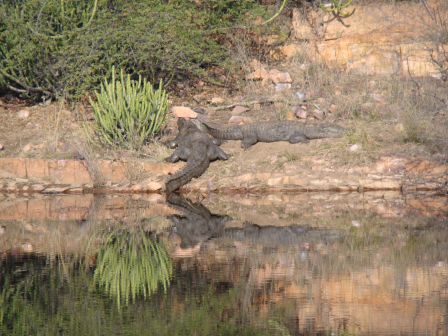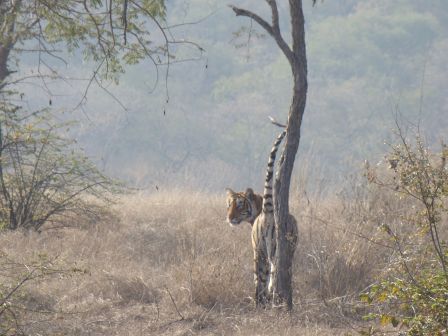
What could be more thrilling than finding a tiger in the wild and shooting it?
For sure the Maharajas of Rajasthan and some members of the British upper class back in the old days could probably think of nothing more thrilling than to hunt and kill a deadly animal like that. At the end of the 19th century the jungles in India were teeming with wildlife and the tigers formed a big threat to the people. Even though humans are not regular prey for tigers, it is estimated that over 10,000 people in India were killed by tigers in the 19th century. Killing tigers therefore was not only prestigious or for taking trophies, but also necessary and an act of bravery.
The history of tiger hunting
In order to prove their control over all that represented India, the British hunted tigers incessantly. The Indian royals in their turn happily participated, either to seek favor with the British or to demonstrate their own prowess. What started out as a necessity and a game, became rampant and pointless killing. Some statistics on this show the extent of the hunting: The Maharaja of Surguja killed around 1,100 tigers, the Maharaja of Udaipur 1,000 tigers, the Maharaja of Vijaynagaram 525 tigers and the Maharaja of Rewa 300 tigers.
Tigers in India today
The current number of tigers in India is estimated at just 1,411 tigers. Ranthambore Tiger Reserve is a 392 square km park and it is one of 39 national parks in India that are official tiger reserves. Only 10 out of those 39 parks are listed as having a good tiger density. Ranthambore is one of them that keeps the hope alive that you can actually spot a tiger during a tiger safari and shoot it, of course, shooting one with a camera that is.
The safari
Undertaking a safari in January is at first most remarkably highlighted by the cold with which you are confronted in the open bus in the early morning. Fortunately at least, the heavy fog is almost completely gone just after we enter the park. In order not be disappointed at the end it is best to expect that you are not going to see any tiger during the three hour drive through the park, yet you can’t stop searching for orange fur with black stripes behind the trees, bushes and rocks. I’m already satisfied after seeing beautiful spotted deer, impressive Sambar deer and wild boar within the first hour of our trip. The whole jeep ride is enriched with the nice scenery of the landscape of rural India and by colorful birds nestled high up in the trees. The amount of deer we have spotted at this point confirms to me that tigers are nowhere close. At some point we come across a tranquil lake, where our guide spots a crocodile. The ancient reptile is mostly submerged and only a small part of its head is visible. Fortunately, a little later two grown crocodiles are sunbathing on the shore of the lake in order to warm up in the morning sun.
The encounter
The whole experience gets a sudden twist when we meet another open bus. The people in this bus apparently have spotted a tigress not far from where we are. The guide in our bus advises us to grab a hold of our seats and the driver follows this up quickly by stepping hard on the gas. The slow and calm safari turns into a rush through the hilly landscape. The deer that we slowly approached and observed earlier are passed by as if they are insignificant stand-ins in the whole story. Not only has the speed increased significantly, but also my heartbeat. The adrenalin is rushing through my veins with Michael Schumacher behind the steering wheel and the prospect of seeing a wild tiger for the first time in my life. After about 5 minutes we reach a parked jeep with people all fixated on one thing. As quick as a sniper with a pressing army close by I shoot three pictures of the tigress that slowly walks away from us. She is not impressed by all the attention and looks back one last time before she walks around a few bushes and out of sight. Thankfully, I have pictures to prove what I saw. It lasted only 15 seconds, but it truly completed the whole experience of the safari and I understand a bit of that thrill the Maharajas must have felt.

Completely satisfied we drive back towards the exit of the park in a more leisurely pace. The experience has opened up all the people in the bus and we all happily talk, laugh and look back on the experience. Again all the deer and other animals are passed by as if they don’t exist. The tiger truly is the king of the jungle here.
For a glimpse at our tours in Rajasthan, visit the Shanti Travel website.








